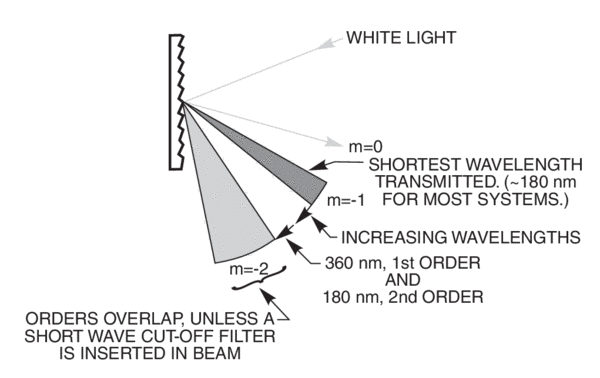
#Diffraction grating physics series
If the grating design instead resembles a series of opaque and transparent regions or slits, then the grating is said to be a transmission amplitude grating. When the grating is completely transparent, there is negligible amplitude modulation and instead, a modulation in phase occurs, resulting in what is called a transmission phase grating. It turns out to be the case that diffraction can occur from either using a transmissive or a reflective approach – meaning that it doesn’t matter if the incident light reflects off of the grating or if it is transmitted through the grating. So, a diffraction grating is simply a surface that has been fitted with a series of slits or rulings that are spaced geometrically with a uniform identical distance between each successive slit or groove. If an opaque screen is fitted with a regular series of elongated openings or slits that are uniformly spaced, then light that is incident on that screen will be altered and the individual wavefronts that emerge through each of the slits will constructively interfere and generate a diffraction pattern with peak intensities that occur at certain angles relative to the plane of the screen and the angle of the incident light wave. The segments of the wavefront that propagate past the obstacle will then interfere with each other and produce an energy density distribution at a point beyond the obstacle that is known as a diffraction pattern. Diffraction refers to the fact that when light from a source encounters an obstacle, be it transparent or opaque, a region of the wavefront of the light is altered in amplitude or phase. Polychromatic light can also be separated into its underlying constituent colors through the use of diffraction. The process by which this occurs is known as refraction. A prism is an optical instrument that can be used to split the white light into different colors. We know that ordinary white light is polychromatic, meaning that it consists of light energy that has different wavelengths which our eyes detect as colors. Understanding Diffraction and the Grating Equation In order to understand diffraction gratings as a product, it will be useful to first review what diffraction is and how a diffraction grating functions to split the different wavelengths of light into spatially separate components that can then be examined and analyzed. In this article, we will review the different types of diffraction gratings that exist and discuss their applications. This process disperses the light in such a way that each wavelength is directed to a different angle as a result of the interference pattern that results from the incident light’s reflection off of or transmission through the grating structure.



Diffraction gratings are optical devices that are used in instruments such as spectrometers to separate polychromatic light into the underlying constituent wavelengths of which it is comprised.


 0 kommentar(er)
0 kommentar(er)
